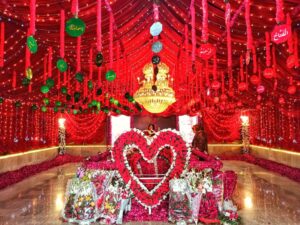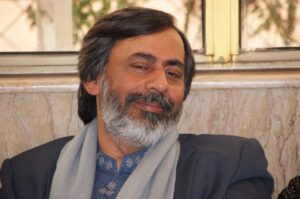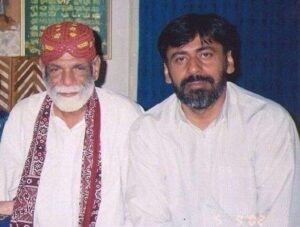Key to beautiful life
Introduction
Living a beautiful life is a pursuit that transcends cultural, social, and geographical boundaries. In this article, we will embark on a journey to explore the concept of a beautiful life—understanding its intricacies, recognizing the causes and factors that affect it, discussing management strategies, and introducing an unconventional approach known as the “Ultimate Remedy.” This unique audio therapy claims to harness the power of sound and intention to promote healing, alleviating conditions that hinder one from experiencing the beauty of life.
Understanding a Beautiful Life
Defining Beauty in Life
A beautiful life is subjective and varies from person to person. It encompasses:
Fulfillment: A sense of purpose and satisfaction in one’s endeavors.
Joy and Happiness: The ability to find joy in everyday moments.
Connection: Meaningful relationships and a sense of belonging.
Wellness: Physical, mental, and emotional well-being.
Gratitude: An appreciation for the present moment and what one has.
Common Causes of a Lack of Beauty in Life
Several factors can hinder the experience of a beautiful life:
Stress and Anxiety: Overwhelming stress and anxiety can cloud one’s perspective.
Negative Thought Patterns: Persistent negative thoughts can erode happiness.
Isolation: Social isolation and loneliness can lead to feelings of emptiness.
Physical Health Issues: Chronic illness or pain can affect overall well-being.
Unfulfilled Goals: Failing to achieve personal goals can be disheartening.
Management Strategies for Embracing a Beautiful Life
Fostering a beautiful life requires intentional effort:
Mindfulness and Meditation: Practicing mindfulness and meditation can reduce stress and enhance well-being.
Cultivating Gratitude: Keeping a gratitude journal can shift focus to the positive aspects of life.
Self-Care: Prioritizing self-care through exercise, a healthy diet, and adequate sleep is essential.
Seeking Support: Confiding in friends, family, or a therapist can provide emotional support.
Setting Achievable Goals: Breaking down larger goals into smaller, achievable steps fosters a sense of accomplishment.
The “Ultimate Remedy” An Alternative Approach
The “Ultimate Remedy” introduces an unconventional approach to experiencing a beautiful life. This unique audio therapy claims to promote healing and enhance one’s life experience through the power of sound and intention.
How to Use the “Ultimate Remedy” for a Beautiful Life
If you decide to explore the “Ultimate Remedy” as a tool to enhance the beauty of your life, follow these steps:
Download the Audio: Visit the designated website and download the “Ultimate Remedy” audio from the provided links.
Follow Instructions: Pay close attention to the instructions on how to use the audio. Specifics of its usage are not detailed in this article, so it’s crucial to fully understand the recommended process.
Contact for Help: For any questions or assistance, you are encouraged to reach out to “help@mastmasthealers.com.”
Happy Patients
Years since day one
%
Satisfaction
Testimonial
How to Listen to the Ultimate Remedy:
Download the Ultimate Remedy audio from our website or app. It’s free and accessible to all.
- Choose a quiet, comfortable space where you won’t be disturbed.
- Close your eyes and visualize yourself in the presence of your higher power or the essence of the universe.
- Listen to the audio with great concentration and closed eyes.
- After the audio is finished, open your eyes and take half a glass of water.
- Close your eyes again and say “your name” or a word that represents your belief (such as “God”, “Universe”, or “Love”) three times in your heart.
- Drink the water with closed eyes in three sips.
- For optimal results, it’s recommended to listen to the Ultimate Remedy three times a day (morning, evening, and before sleeping) for seven consecutive days.
About the Creator – Syed Safdar Hussain Bukhari
Introduction and Early Life
Syed Safdar Hussain Bukhari, also known as Kakian Wali Sarkar, was a unique example of kindness, devotion, and tenacity. Born on May 6th, 1940, he dedicated his life to serving humanity and providing relief to those suffering from various ailments.

Social Work and Spiritual Journey
Between 1960-1980, he engaged in social work by undertaking road repairs, establishing schools, and arranging medical supplies in Lilla Town. In 1990, he left his ancestral home and family wealth to move to Lahore, where he comforted the depressed and saddened through mystic dance and music.
The Ultimate Remedy
In 1998, Baba Bukhari’s research led to the discovery of “The Ultimate Remedy,” a blessed audio that he believed could cure physical, psychological, spiritual, and supernatural problems. The remedy involved listening to the audio three times a day for seven consecutive days, followed by a specific water ritual. This method claimed to cure various ailments, including coronavirus, AIDS, cancer, drug addiction, worldly problems, and psychological issues.
Legacy and Death
Baba Bukhari’s research and unconditional love left a lasting impact on humanity, providing positive thinking, peace of mind, health, fearless life, and an example of love and compassion. He passed away on February 8th, 2005, leaving behind a legacy of healing through “The Ultimate Remedy.”

His spiritual successor is Syed Baba Jaan
According to Baba Bukhari (RA), his spiritual successor is Mr. Shakir Uzair, also known as Syed Baba Jaan . As the chosen heir to Baba Bukhari’s spiritual legacy, Syed Baba Jaan carries forward the teachings and practices that have been passed down through generations. Dedicated to serving humanity and promoting healing, Mr. Shakir Uzair continues to spread the message of love, compassion, and the transformative power of the Ultimate Remedy to help countless individuals in their journey towards holistic wellness and personal growth.

